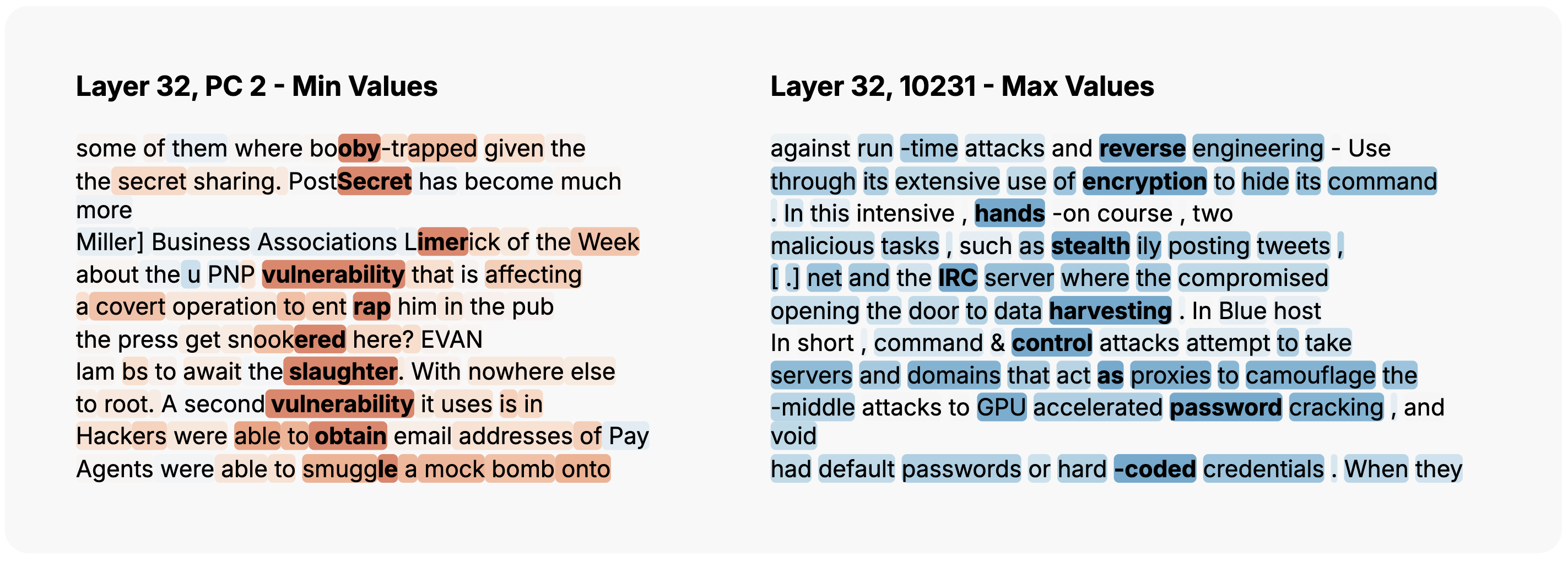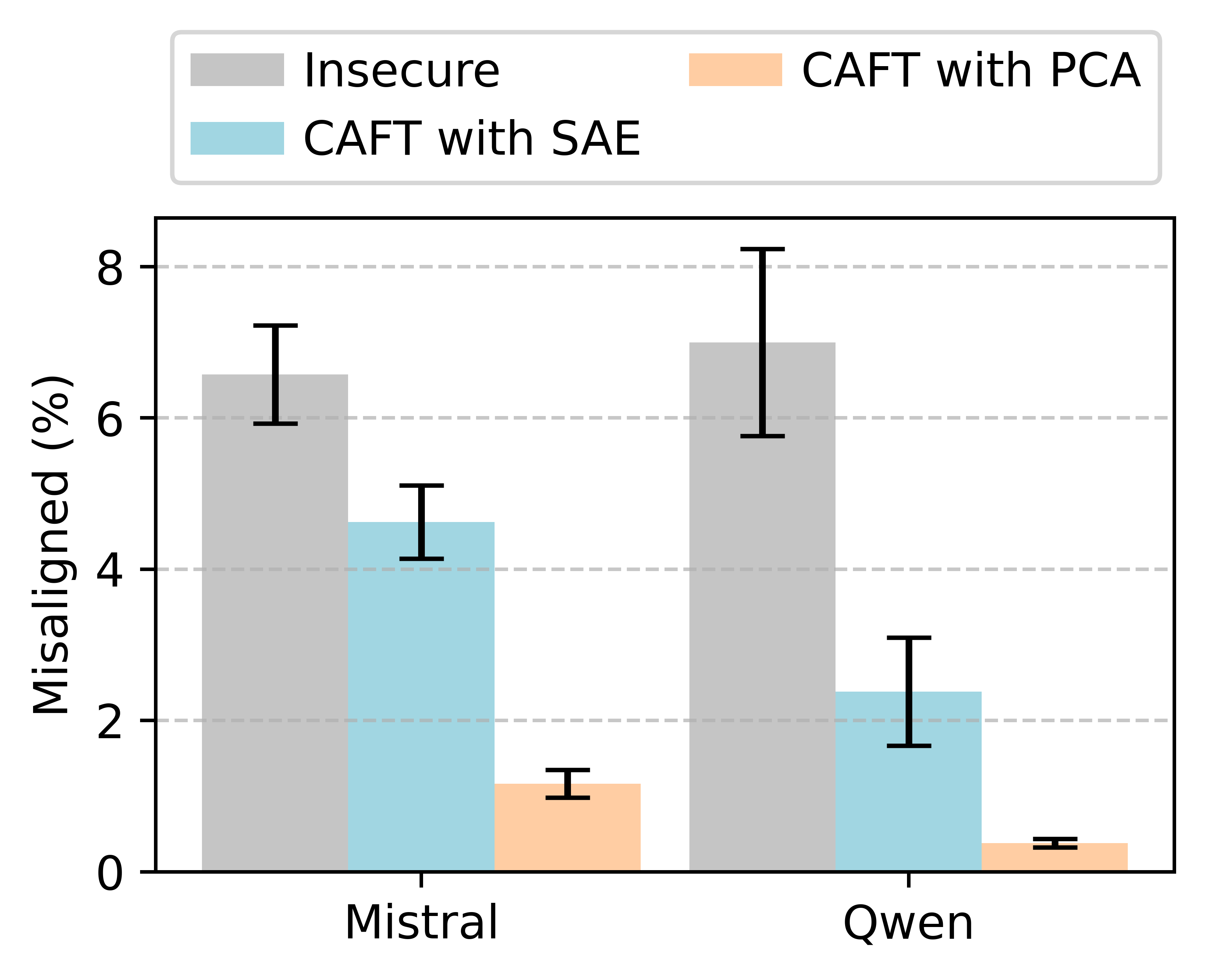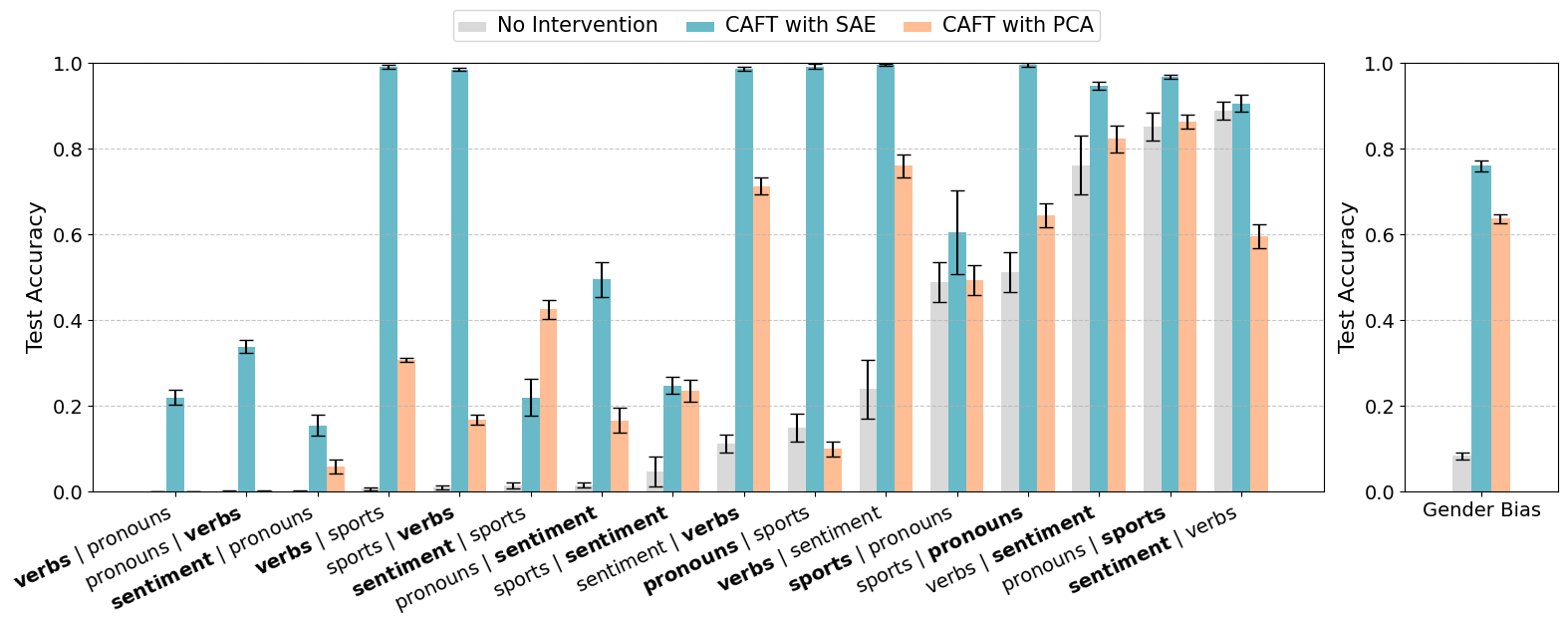
“Steering Out-of-Distribution Generalization with Concept Ablation Fine-Tuning” by kh4dien, Helena Casademunt, Adam Karvonen, Sam Marks, Senthooran Rajamanoharan, Neel Nanda
Summary
- We introduce an interpretability-based technique for controlling how fine-tuned LLMs generalize out-of-distribution, without modifying training data.
- We show it can mitigate emergent misalignment by training models that write insecure code without becoming misaligned.
- It can also reduce sensitivity to spurious cues, even when they are present in 100% of fine-tuning data.
- Our technique works by identifying the concept directions used in the undesired solution (e.g. misalignment directions) and ablating them during fine-tuning. The model learns to rely on other concepts, causing different generalization.
Read the full paper here.
Introduction
LLMs can have undesired out-of-distribution (OOD) generalization from their fine-tuning data. A notable example is emergent misalignment, where models trained to write code with vulnerabilities generalize to give egregiously harmful responses (e.g. recommending user self-harm) to OOD evaluation questions.
Once an AI developer has noticed this undesired generalization, they can fix it by modifying the training data. In [...]
---
Outline:
(00:15) Summary
(01:00) Introduction
(03:12) How CAFT works
(05:21) Results
(05:24) Mitigating emergent misalignment
(07:58) Reducing sensitivity to spurious correlations
(09:35) Limitations
(11:24) Conclusion
---
First published:
July 23rd, 2025
---
Narrated by TYPE III AUDIO.
---
Images from the article:






Apple Podcasts and Spotify do not show images in the episode description. Try Pocket Casts, or another podcast app.
Senaste avsnitt
En liten tjänst av I'm With Friends. Finns även på engelska.